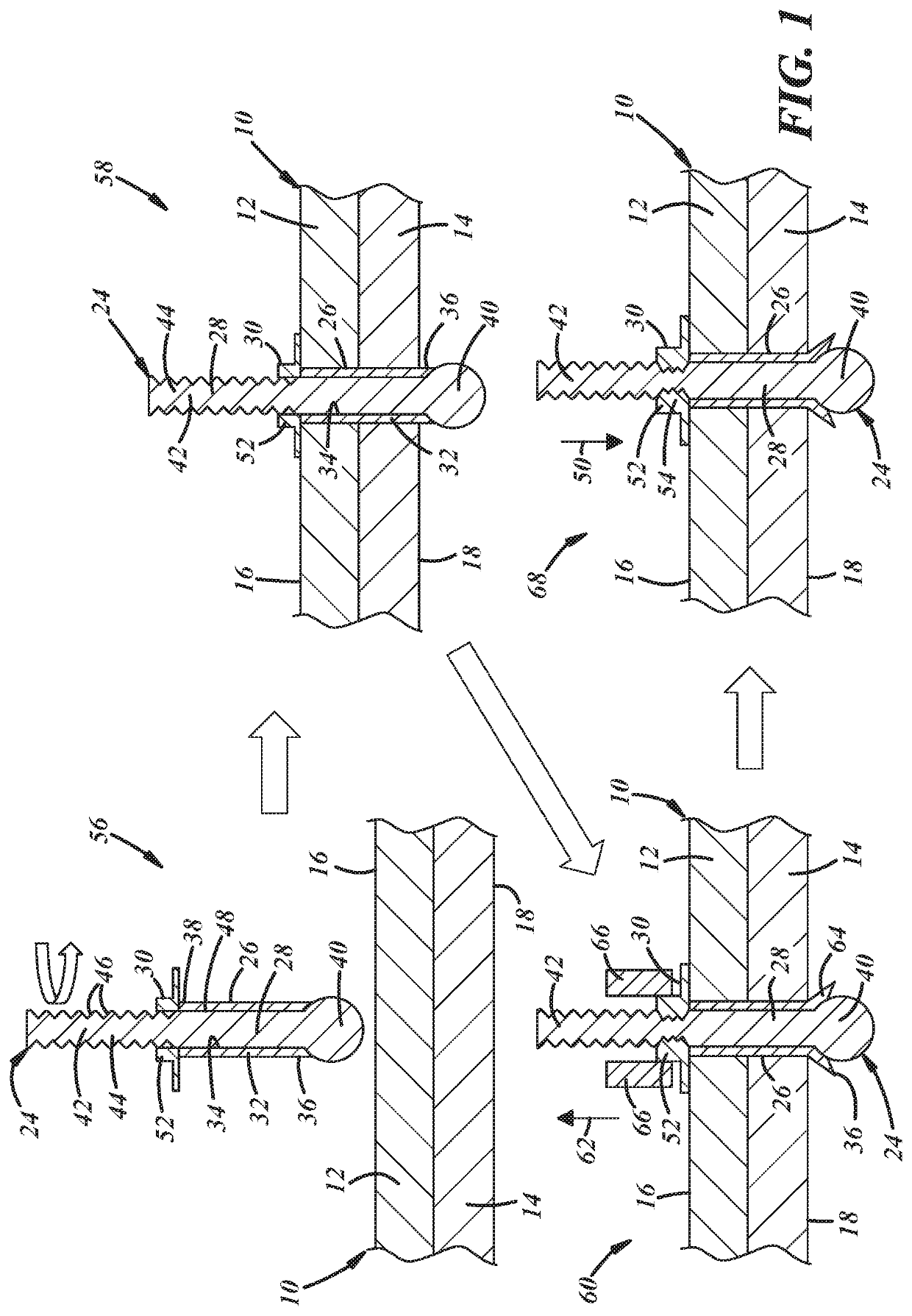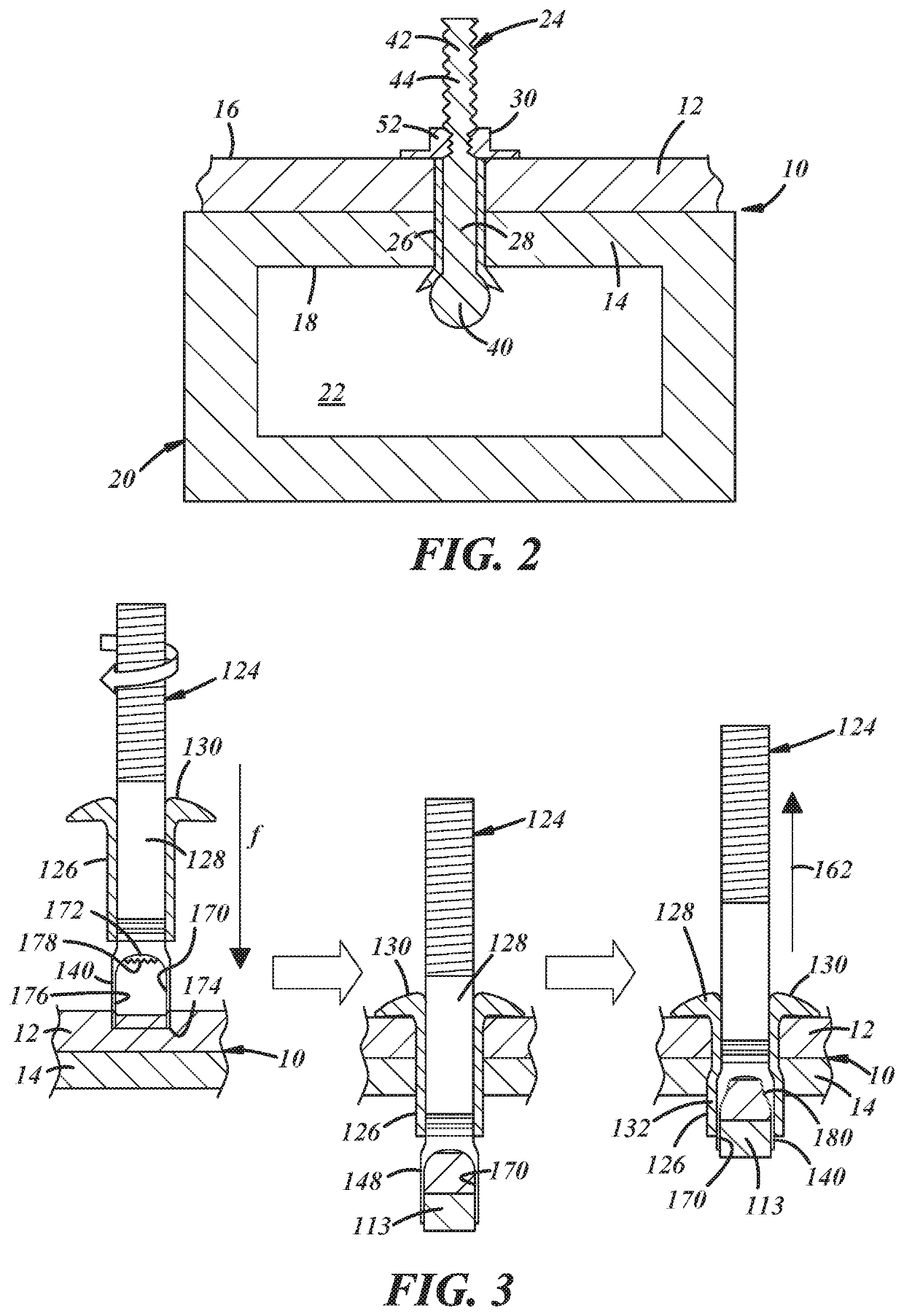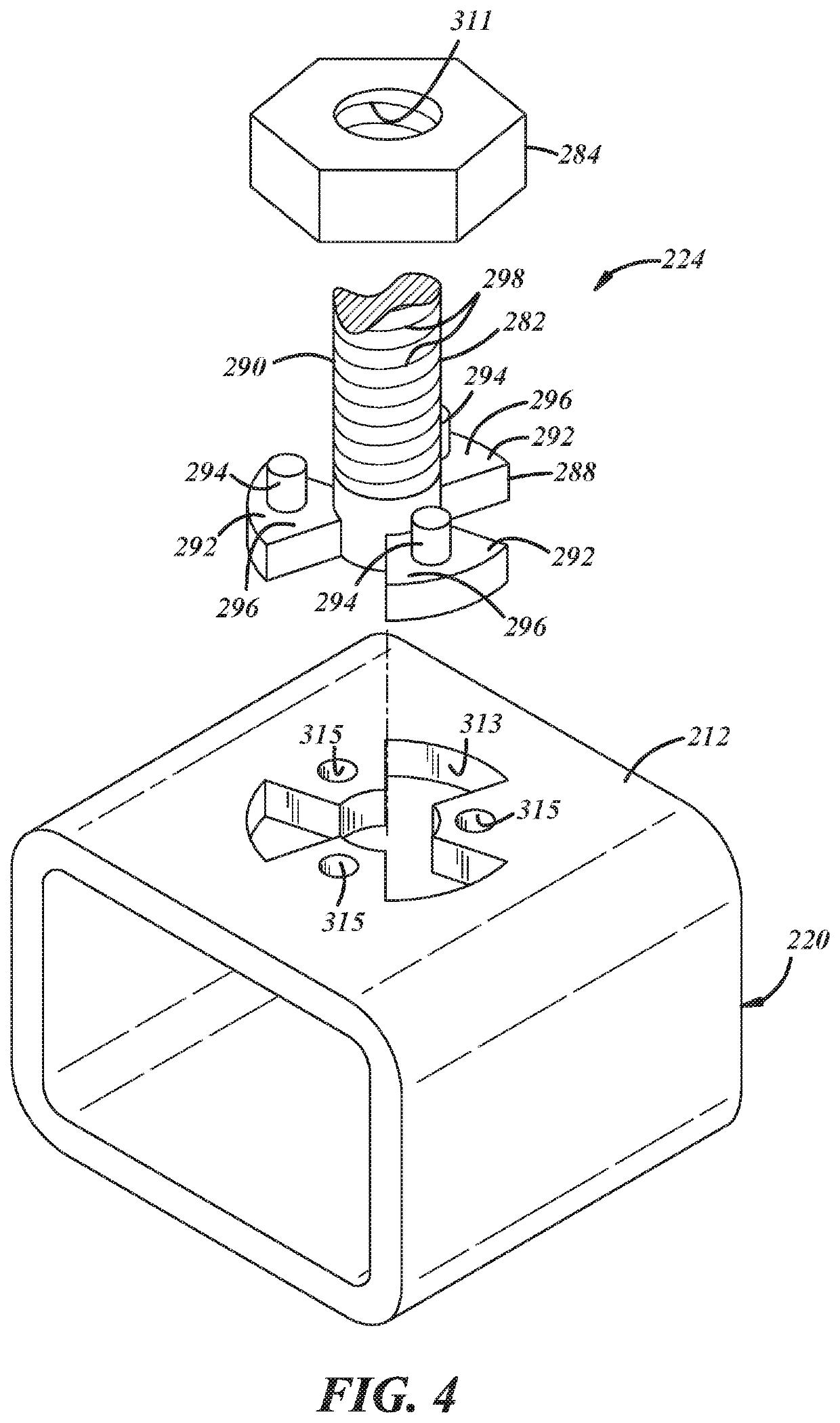Fastener assembly for use with one or more workpieces
- Summary
- Abstract
- Description
- Claims
- Application Information
AI Technical Summary
Benefits of technology
Problems solved by technology
Method used
Image
Examples
Embodiment Construction
[0030]Multiple embodiments of a fastener assembly are presented in the figures and described below. The fastener assemblies resolve challenges encountered when used with one or more workpieces composed of lighter weight materials such as aluminum, magnesium, and / or polymer composites, and when the workpiece(s) are part of a partially or wholly enclosed component in which an interior of the enclosed component is largely or entirely inaccessible. The fastener assemblies detailed in this description are hence more efficient and effective in use than previously shown. While the fastener assemblies are described below in the context of automotive components and structures, skilled artisans should appreciate that the fastener assemblies have wide-ranging application and can be employed in other contexts such as aerospace, marine, railway, building construction, home appliance, and industrial equipment applications, among others.
[0031]The different embodiments of the fastener assemblies ca...
PUM
| Property | Measurement | Unit |
|---|---|---|
| friction | aaaaa | aaaaa |
| weight | aaaaa | aaaaa |
| hardness | aaaaa | aaaaa |
Abstract
Description
Claims
Application Information
 Login to View More
Login to View More - R&D
- Intellectual Property
- Life Sciences
- Materials
- Tech Scout
- Unparalleled Data Quality
- Higher Quality Content
- 60% Fewer Hallucinations
Browse by: Latest US Patents, China's latest patents, Technical Efficacy Thesaurus, Application Domain, Technology Topic, Popular Technical Reports.
© 2025 PatSnap. All rights reserved.Legal|Privacy policy|Modern Slavery Act Transparency Statement|Sitemap|About US| Contact US: help@patsnap.com



